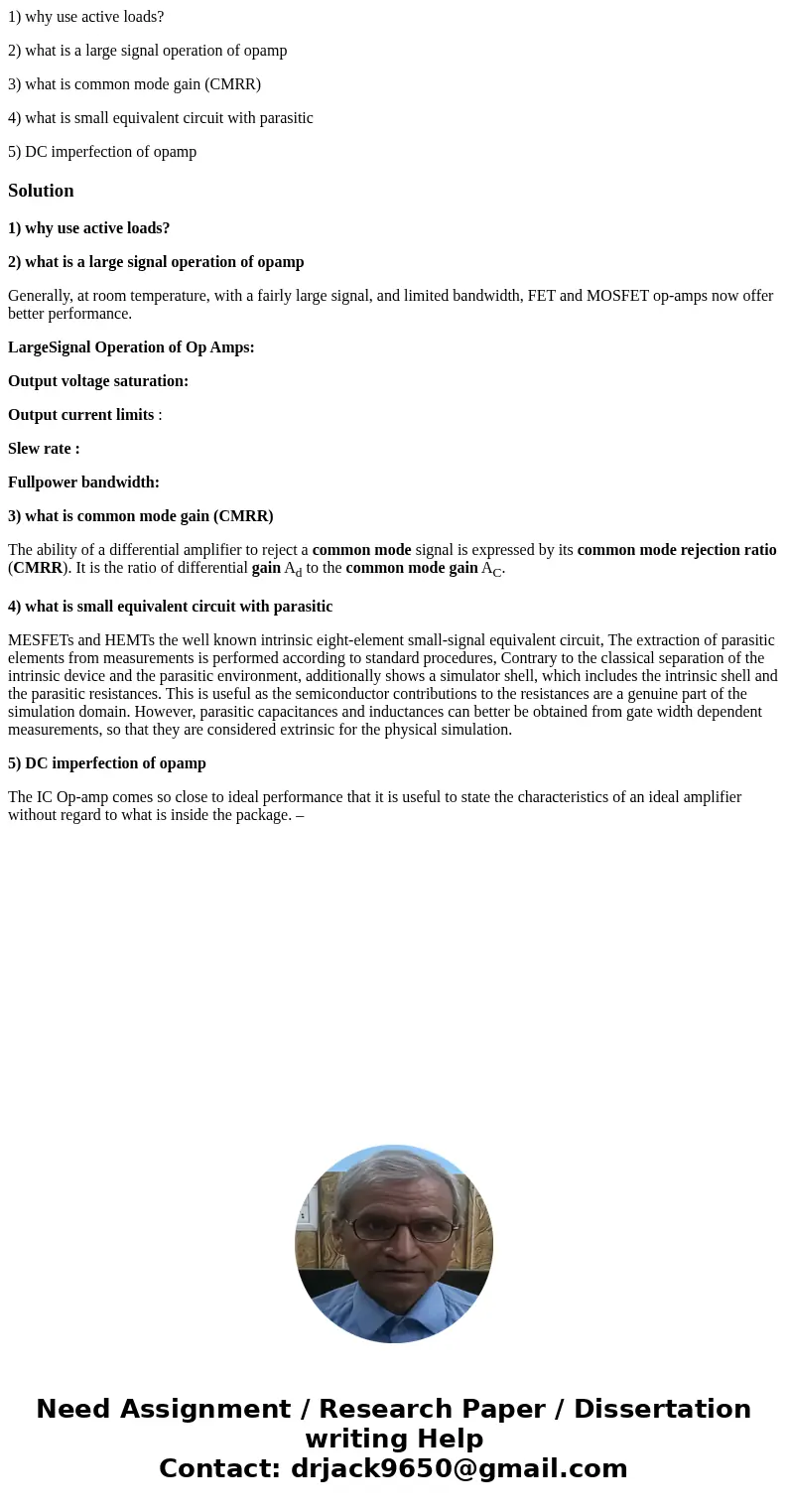1 why use active loads 2 what is a large signal operation of
1) why use active loads?
2) what is a large signal operation of opamp
3) what is common mode gain (CMRR)
4) what is small equivalent circuit with parasitic
5) DC imperfection of opamp
Solution
1) why use active loads?
2) what is a large signal operation of opamp
Generally, at room temperature, with a fairly large signal, and limited bandwidth, FET and MOSFET op-amps now offer better performance.
LargeSignal Operation of Op Amps:
Output voltage saturation:
Output current limits :
Slew rate :
Fullpower bandwidth:
3) what is common mode gain (CMRR)
The ability of a differential amplifier to reject a common mode signal is expressed by its common mode rejection ratio (CMRR). It is the ratio of differential gain Ad to the common mode gain AC.
4) what is small equivalent circuit with parasitic
MESFETs and HEMTs the well known intrinsic eight-element small-signal equivalent circuit, The extraction of parasitic elements from measurements is performed according to standard procedures, Contrary to the classical separation of the intrinsic device and the parasitic environment, additionally shows a simulator shell, which includes the intrinsic shell and the parasitic resistances. This is useful as the semiconductor contributions to the resistances are a genuine part of the simulation domain. However, parasitic capacitances and inductances can better be obtained from gate width dependent measurements, so that they are considered extrinsic for the physical simulation.
5) DC imperfection of opamp
The IC Op-amp comes so close to ideal performance that it is useful to state the characteristics of an ideal amplifier without regard to what is inside the package. –

 Homework Sourse
Homework Sourse